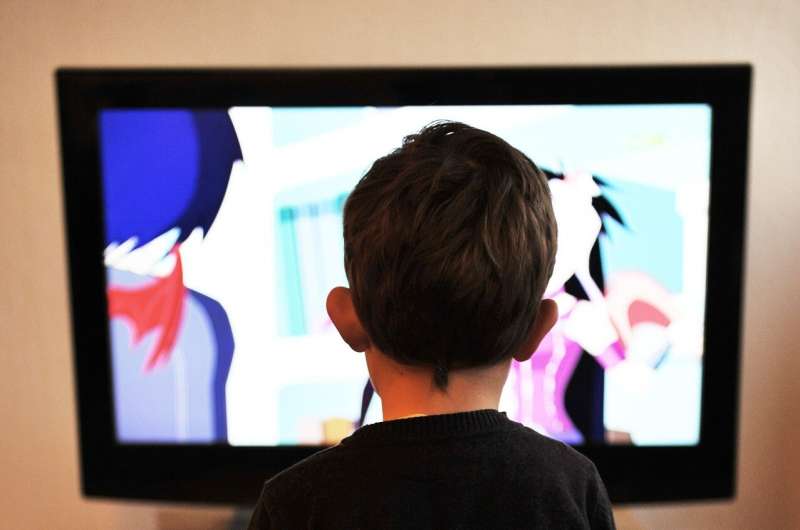Credit: CC0 Public Domain
Children's television programming often contains moral lessons and examples of inclusiveness, but children may struggle to comprehend and transfer the situations presented on an animated production to their own lives, University of California, Davis, research suggests.
In two separate studies, researchers monitored more than 100 4-6-year-olds of various ethnicities from urban and rural areas in the United States and the Netherlands while they watched popular children's television shows. They found that, in some instances, viewing a television show positively influenced children's sense of fairness and right and wrong, such as with theft or interpersonal violence. More complex ideas, however, proved difficult for them to comprehend. Furthermore, nuance may backfire, causing children to behave poorly in their own lives because they don't understand the nuanced solutions presented in the show.
For this reason, researchers recommend that children's programs contain inserts with brief but explicit explanations or discussions of the lessons presented in the show, such as inclusion. When researchers experimented with inserted explanations, children's responses improved.
"Just putting 30 seconds of explanation in the program helped the children to understand what the lessons were in a 12-minute segment," said Drew P. Cingel, UC Davis assistant professor of communication and the lead author of the two recent studies. He explained that the researchers' inserts were simple, but presented messages literally rather than metaphorically, which promoted prosocial intentions and decreased stigmatization of others.
Research explored 'theory of mind'
The research explored "theory of mind," which refers to an individual's ability to attribute mental states to oneself and others, and to further understand that others have mental states that differ from their own. Theory of mind undergoes rapid development during preschool years, making the research especially relevant, the article said. Children low in theory of mind were those most positively influenced by the explicit inserts.
"This could make a big difference and has such practical implications. I just think of what a significant role media could have in child development—among children that need the most help—with this one improvement." Follow-up studies are planned, Cingel said.
Most children who did not see the explicit insert expressed more exclusionary attitudes toward other children. In the scenarios in one study, one child was using crutches, another used a wheelchair, and yet another was obese. One child appeared to have an "average body type" without disabilities. Most children who answered questions about the characters said these children with disabilities were not as smart as others, and they expressed other negative feelings about the characters' differences, demonstrating that lessons of inclusivity may be difficult for many children to comprehend.
He said these misunderstandings made sense when one considers that in 12 minutes of content, children often see nine minutes of exclusionary behavior or a problem being presented with only three minutes or less of a solution. The solutions presented, then, often don't resonate with the child viewer in a positive way. And in most cases, the studies show, the program reinforced or suggested stereotypes and increased stigmatization, rather than educating children to behave otherwise, especially when they viewed the show with other children.
Cingel, director of the UC Davis Human Development and Media Lab, said he hopes the research prompts changes in children's programming. "I want this to matter in the lives of kids, not just academics," he said.
More information: Drew P. Cingel et al, Can television help to decrease stigmatization among young children? The role of Theory of Mind and general and explicit inserts, Media Psychology (2019). DOI: 10.1080/15213269.2019.1601570
Drew P. Cingel et al. Prosocial Television, Preschool Children's Moral Judgments, and Moral Reasoning: The Role of Social Moral Intuitions and Perspective-Taking, Communication Research (2017). DOI: 10.1177/0093650217733846
Journal information: Communication Research
Provided by UC Davis






















